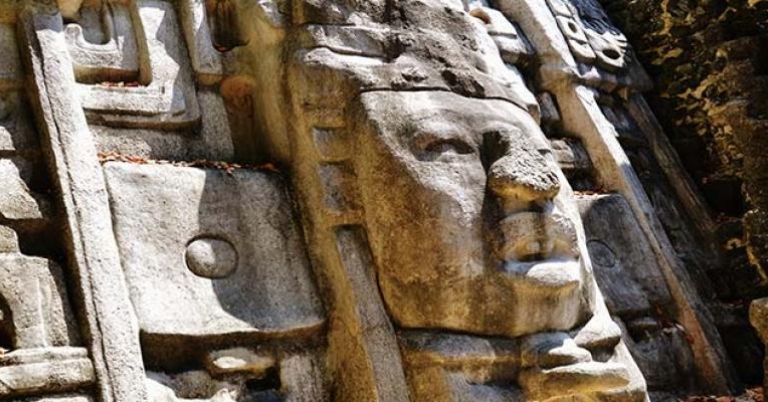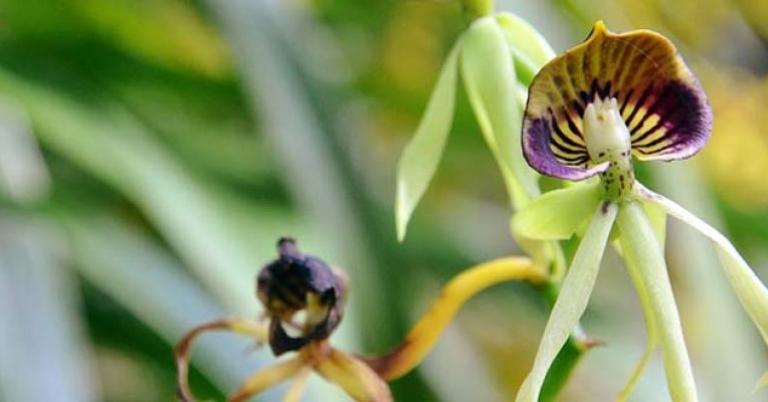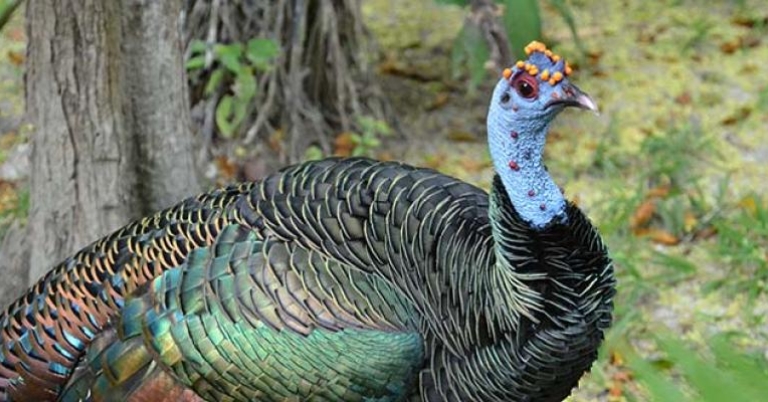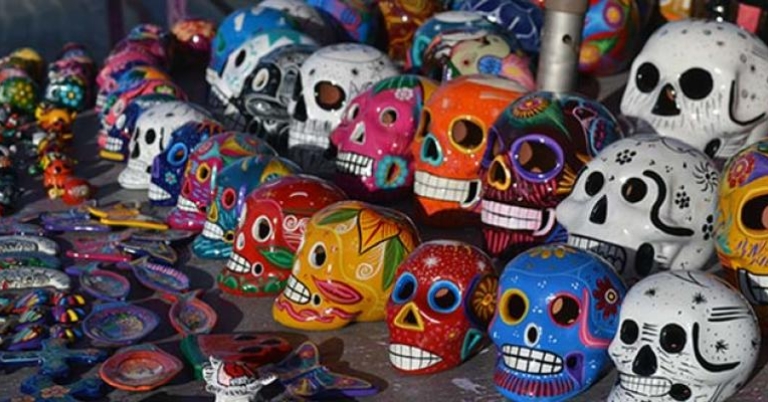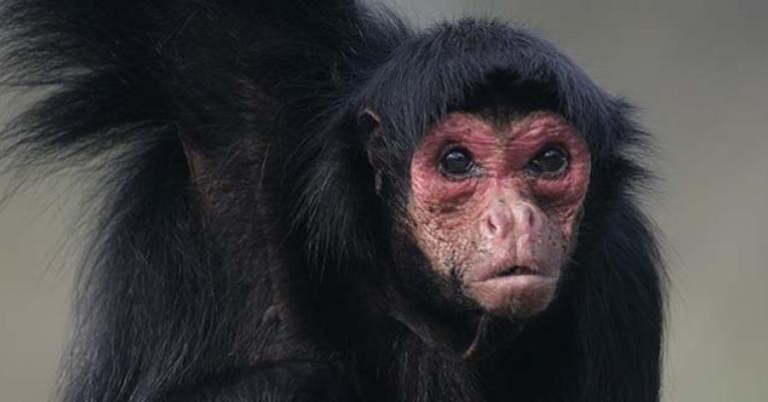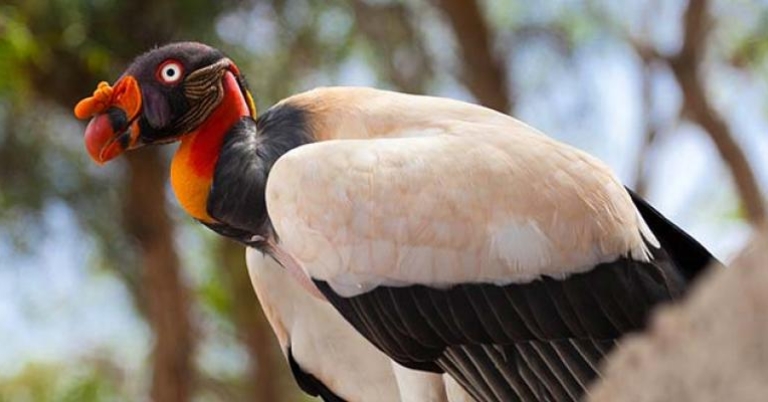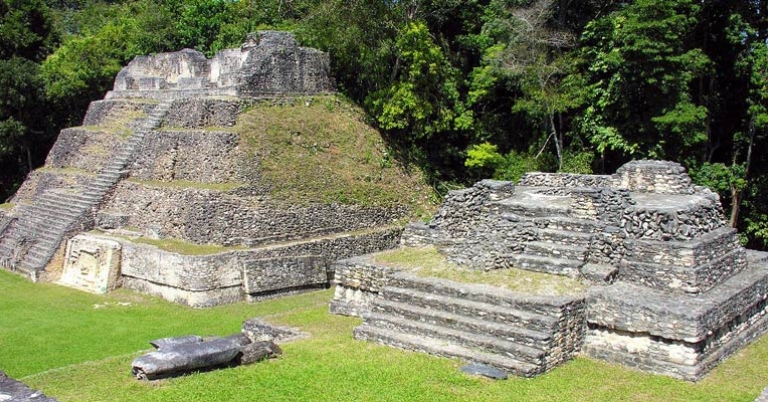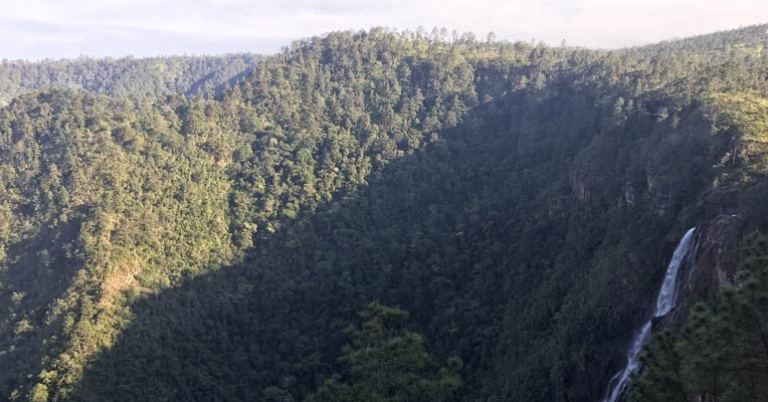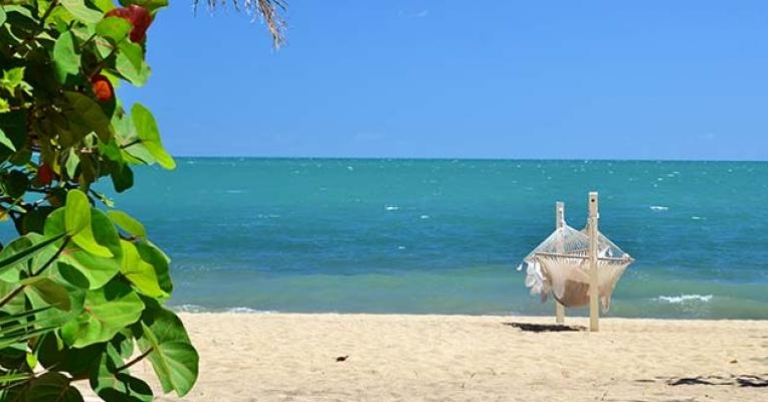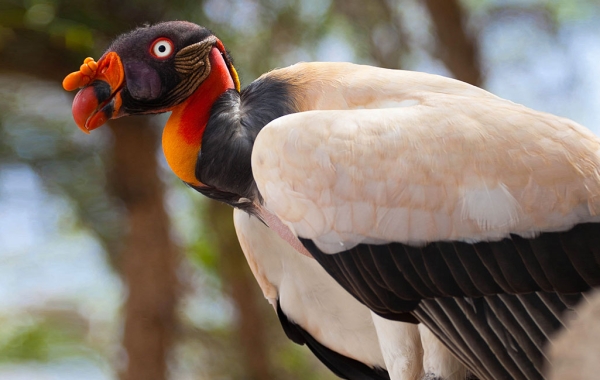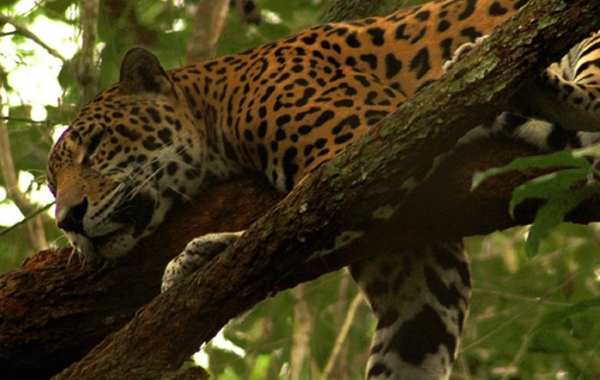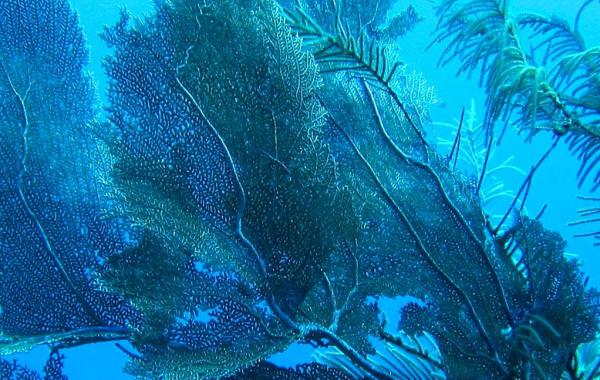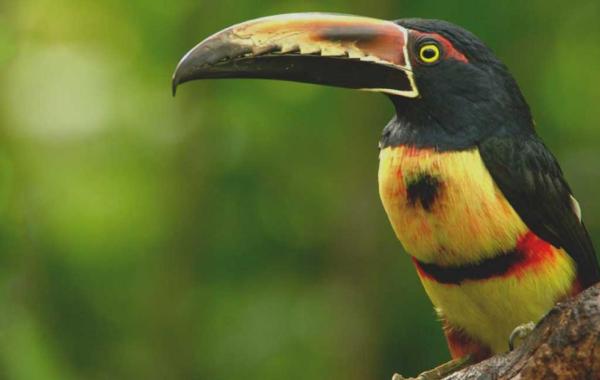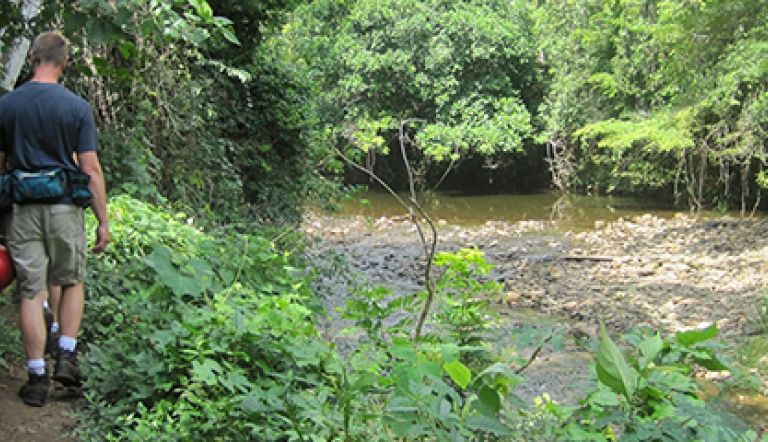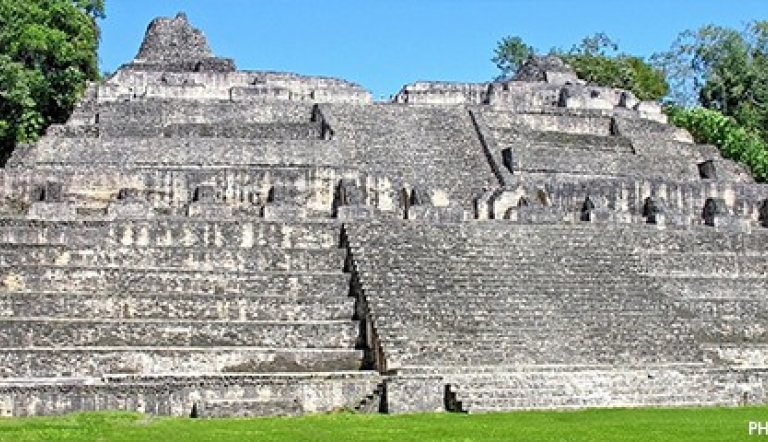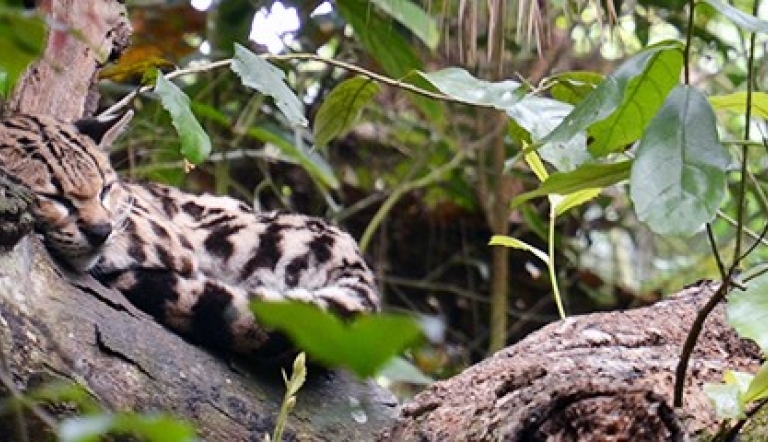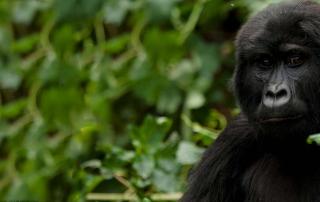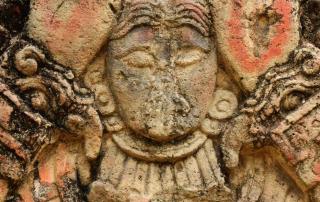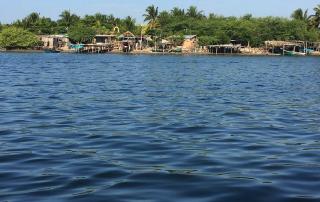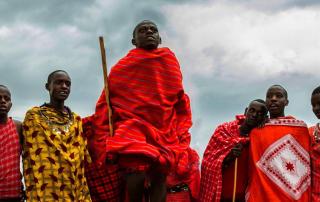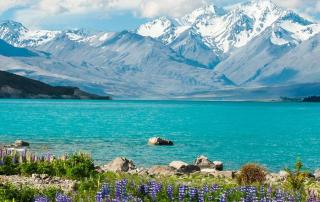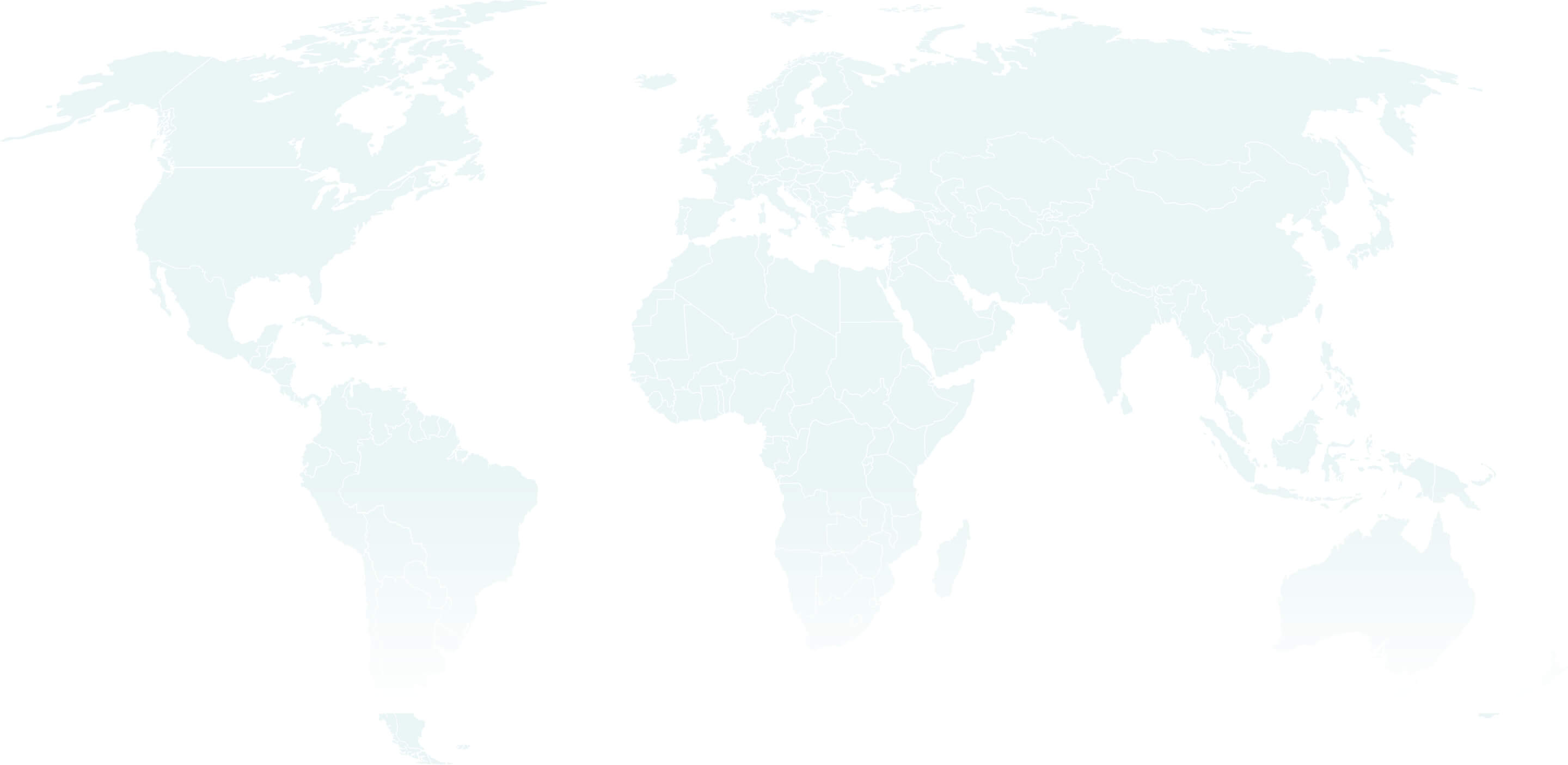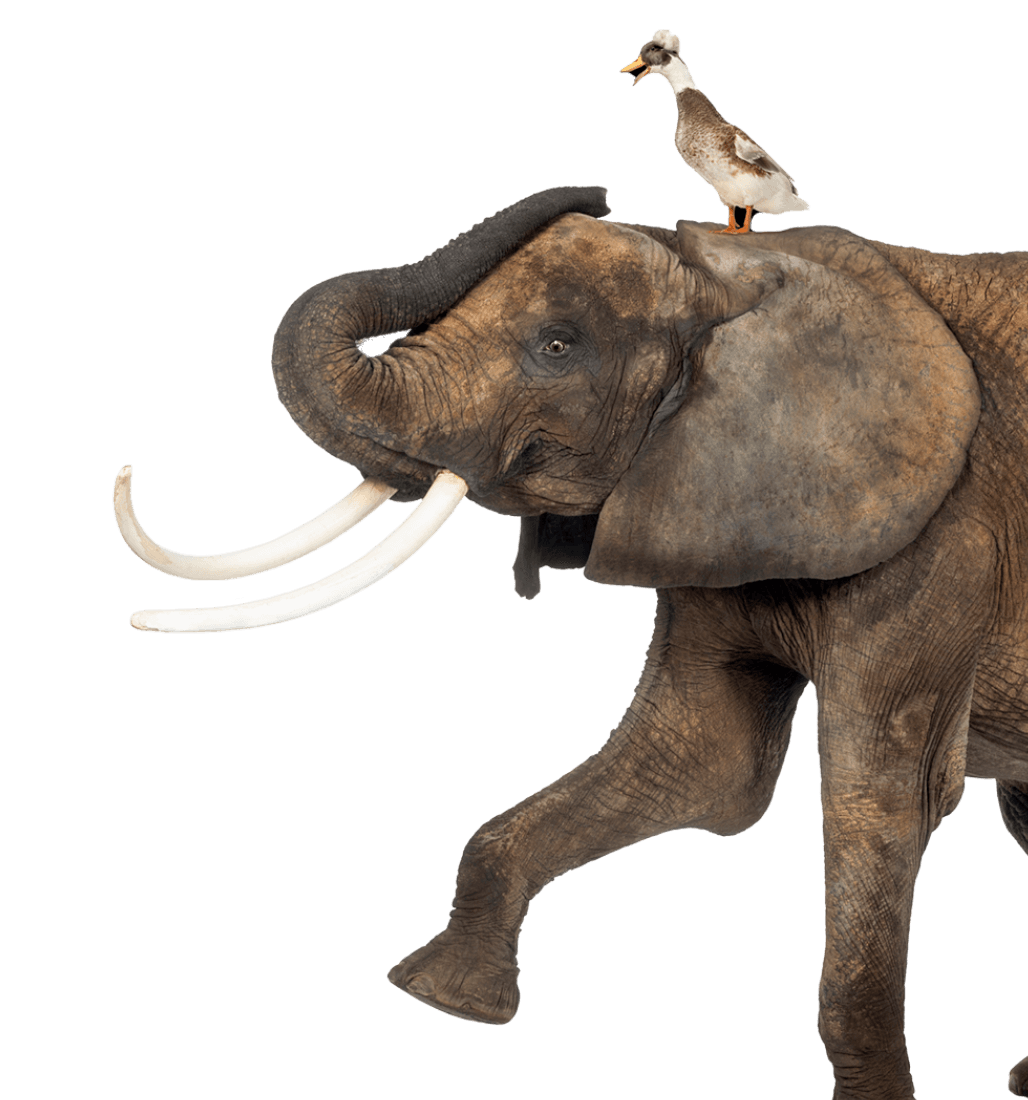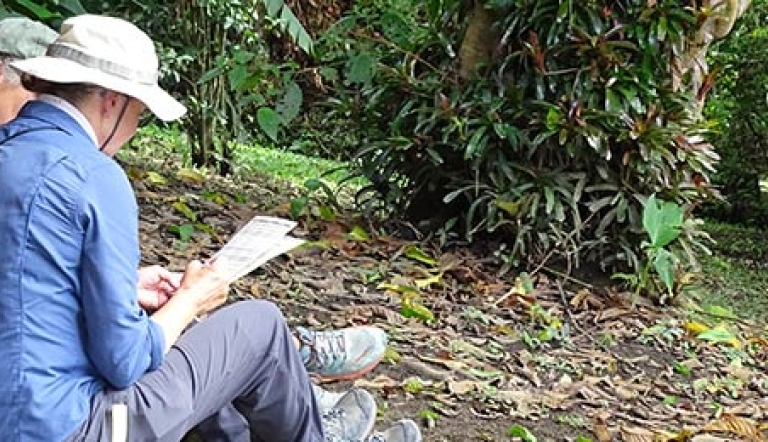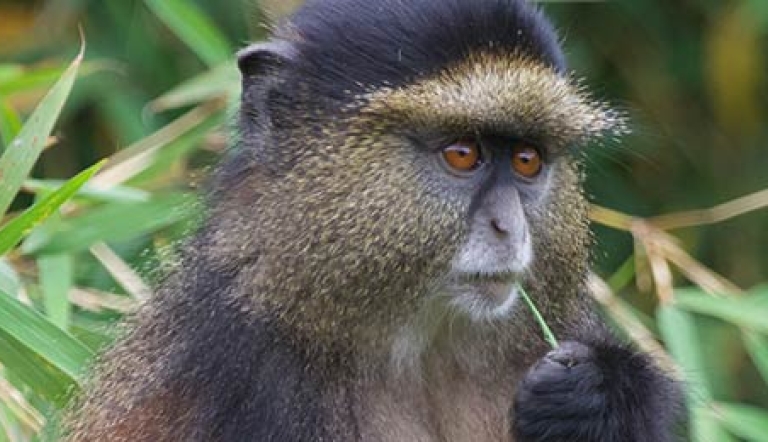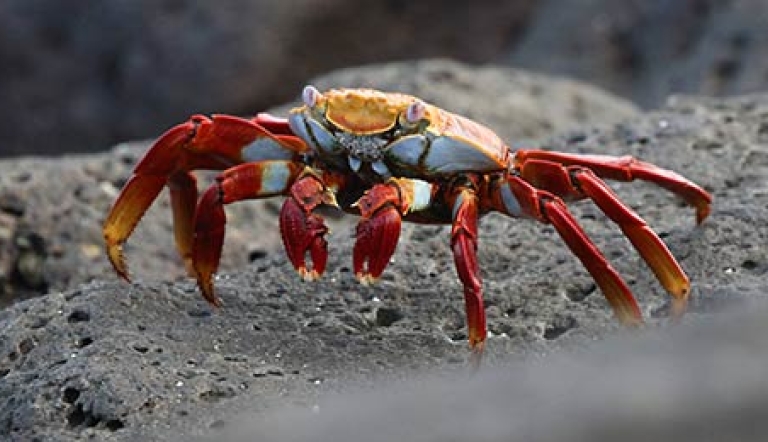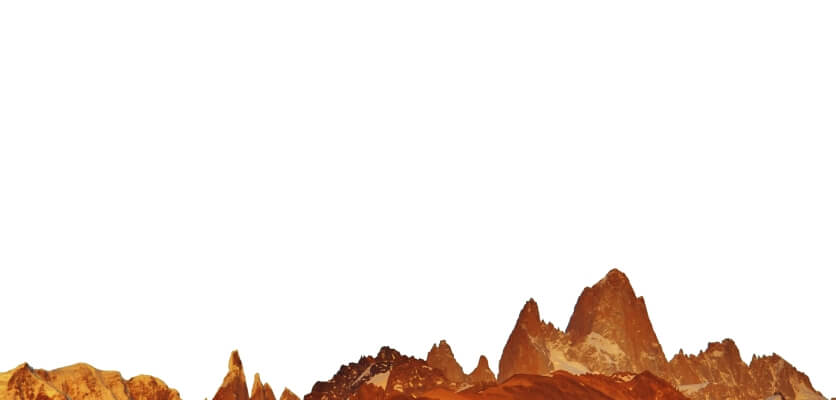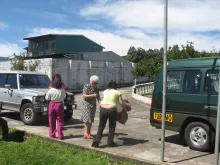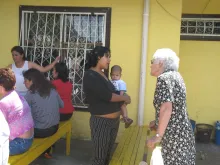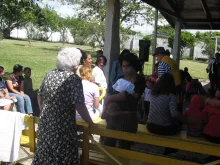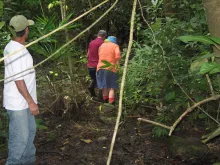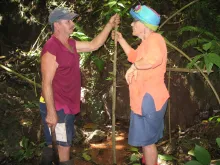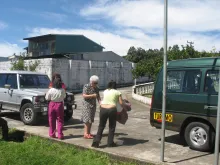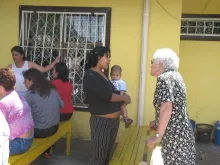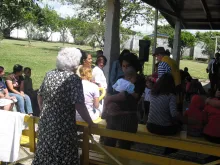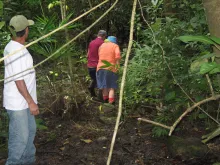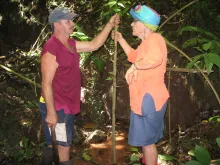This tiny nation at the base of the Yucatan Peninsula contains the second largest barrier reef system in the world, beautiful and ecologically rich cayes and atolls, and an immense diversity of forests, from pine forests to lowland rainforests.
Belize comprises 85 ecosystems for naturalists to investigate. Travelers can venture north to the Orange Walk District to explore wetland diversity and participate in global discussions on the ecological health of wetlands, or south to Cockscomb Basin Wildlife Sanctuary, the world’s first jaguar preserve. This amazing diversity of habitats supports Neotropical fauna like jaguars, tapirs, and howler monkeys, plus birds like toucans, hummingbirds, and the Jabiru, the tallest flying bird in Central and South America.
For adventurers, Belize offers rafting, rappelling, climbing, and kayaking. Go zip lining through the jungle, or snorkel the spectacular marine environment that includes fringe reefs, mangroves, sea-grass beds and open ocean environments. Belize is also home to a number of caves, including the famous Actun Tunichil Muknal (home of the famous “crystal maiden” skeleton) and Chiquibul, the largest known cave system in Central America.
An ethnic melting pot with a unique Caribbean culture, Belize’s diversity makes it attractive for travelers with interests in cultural studies and immersion. Archaeological sites like Xunantunich, Lamanai, and Caracol shed light on the ancient Maya civilization that once flourished here. Holbrook’s partnerships with local organizations provide opportunities for meaningful service work projects or cultural exchange, and conservation discussions are flavored by the country’s history and the special relationship between the ancient Maya and their environment. Whether your goal is to study marine life with local scientists, learn about ancient cultures, or relax on its beautiful beaches, Belize offers a wealth of cultural, ecological and marine treasures.
Marine Life
Belize boasts a variety of unspoiled natural habitats both on land and at sea. Its 300 miles of coastline are fringed by mangroves and dotted with 450 cayes and three beautiful coral atolls. Stretching 190 miles, the Belize Barrier Reef is the world’s second largest coral reef and arguably the country’s most prized natural treasure. The reef is one of the world’s most diverse ecosystems, and an absolute must-visit location for snorkelers and divers. Over 500 species of fish and 100 species of coral have been officially researched at the reef, representing just a tiny fraction of the life that dwells under the surface.
Flora & Fauna
The mountain ranges, tablelands, rivers, waterfalls, creeks, lagoons, and tropical rainforests in Belize are all are rich with biodiversity. Although only 50 percent of Belize’s primary broadleaf tropical rainforests escaped the logger’s axe, much of these areas are now protected as nature reserves. This tiny country boasts 4,000 species of tropical plants, harboring a great diversity of animal life such as jaguars, spider monkeys, and bats. Coastal mangrove swamps not only nurture the barrier reef, but also provide shelter for many species of birds including Boat-billed Heron, Reddish Egret, and Red- footed Boobies. It is common to spot as many as 100 species of birds in one day.
Culture & History
Belize boasts several important sites of the earliest pre-Columbian Maya settlements, majestic ruins of the classic period, and examples of post-classic ceremonial construction. Among its most popular ancient Maya archaeological sites are Altún Ha, Xunantunich, and Lamanai. Like many Caribbean locales, Belize is a cultural crossroads and its tiny population is a mosaic of ethnicities. Backgrounds ranging from Maya to British, African, East Indian, Garifuna, and Mexican all contribute to form the distinct culture of Belize. Although officially an English-speaking country, Spanish is a popular second language.
Entry & Exit Requirements
Entry & Exit Requirements
U.S. citizens must have a valid passport to enter Belize. U.S. passports must be valid for the duration of your stay in Belize. As this requirement is subject to change at any time without notice, we recommend at least six months’ passport validity.
A visa is not required for visits up to 30 days.
If you are traveling with minors, you may be asked to show U.S. birth certificates for each child. You may also be required to present documentation that the minor is traveling with the permission of any non-traveling parents/guardians, such as with a notarized letter of consent, custody decree, adoption papers, or death certificates.
If you are not traveling with a U.S. passport, please check with the Belizean Embassy for the requirements based on your nationality.
When leaving Belize there is a departure tax of approximately $40, which is included in the cost of your ticket if you purchase your airfare through Holbrook Travel. If crossing a land border, there is an exit fee of approximately $15 USD ($30 BZD) for U.S. citizens.
Health Information
IMMUNIZATIONS
The Centers for Disease Control recommends that all travelers be up to date on routine vaccinations such as measles-mumps-rubella (MMR) vaccine, diphtheria-pertussis-tetanus vaccine, varicella (chicken pox) vaccine, and your yearly flu shot before every trip.
There are no vaccinations required for entry into Belize, unless you are traveling from an endemic yellow fever area within six weeks prior to entry.
Some physicians recommend that travelers get hepatitis A and typhoid vaccines before visiting Belize.
Please consult your physician for additional information and recommendations based on your individual circumstances.
MALARIA
The CDC warns that travelers to Central America may be at risk for exposure to malaria. Malaria is caused by a parasite found in Anopheles mosquitos, which are active from dusk until dawn. Prevention is twofold: the use of anti-malarial drugs and the prevention of insect bites. If you choose to use an anti-malarial drug, as recommended by the CDC, see your physician for a prescription.
CHIKUNGUNYA
Locally transmitted cases of chikungunya have been reported in Belize. Local transmission means that mosquitoes in the area have been infected with chikungunya and are spreading it to people. The CDC recommends that travelers to Central America take the usual precautions to protect themselves from mosquito bites.
ZIKA VIRUS
Locally transmitted cases of Zika virus have been reported in Belize. Local transmission means that mosquitoes in the area have been infected with Zika and are spreading it to people. The CDC recommends that travelers to Belize protect themselves from mosquito bites. As a precaution, the CDC advises women who are pregnant to consider postponing travel to any area where Zika virus transmission is ongoing.
SUN EXPOSURE
The effects of the sun can be damaging to the eyes and skin. Spending time outdoors exposes you to the sun’s harmful ultraviolet (UV) rays, even on cloudy days. To protect yourself from the sun, use a broad spectrum sunscreen of at least SPF 15, protect skin with clothing, wear a wide-brimmed hat and sunglasses, and drink plenty of fluids. (Please note: Biodegradable/reef-safe sunscreen is required if you will be swimming or snorkeling in the ocean.)
Currency
The currency of Belize is the Belizean Dollar.
Electricity
The electrical current in Belize is 110V 60Hz AC. Travelers from the United States do not have to use converters.
Time Zone
The time zone in Belize is Central Time Zone (UTC-06:00).
Belize does not observe Daylight Saving Time.
Departures and arrivals on flight schedules are listed in the local time.
Communications
PHONES
Belize’s country code is +501.
To call Belize (from the U.S.): Dial 011-501-(xx-xxx-xxxx)
To call the United States: Dial 001-(xxx-xxx-xxxx)
Belize is equipped with a modern telephone number service much like the United States. As always, international calling can be expensive so it is recommended to purchase an international pre-paid calling card. Most modern cell phones will work in Belize, however it is recommended to check with your service provider for information on roaming charges, additional fees, and coverage. Local SIM card and cell phone rentals are available at airports and major hotels.
INTERNET
Cyber cafes and WiFi hotspots are quite common in most major destinations. Most hotels also provide data ports for laptop computers.
Reading List
FIELD GUIDES
Belize, Travellers’ Wildlife Guides
Les Beletsky
An all-around field guide featuring color illustrations of 200 birds, 50 mammals, 150 coral reef creatures and 80 reptiles and amphibians.
Belize Birds
Rainforest Publications
This handy field guide to the feathered friends of Belize is a 14-panel, full-color reference. The illustrations were created by British naturalists Robert Dean and Mark Wainright.
Belize Field Guide
Rainforest Publications
Mammals, amphibians, and reptiles are all included in this 14-panel, fold-up pocket field guide.
Belize Marine Life
Rainforest Publications
This handy guide to the ocean life around Belize is a 14-panel, full-color reference. Includes illustrations for reef fish, marine mammals, sport fish, and sea turtles.
Belize Wildlife
James Kavanagh
This fold-up, laminated card in the Pocket Naturalist series features color drawings and short descriptions of fishes, butterflies, reptiles and amphibians, birds and mammals common to Belize.
Reef Fish Identification Caribbean
Paul Humann
This definitive guide for underwater enthusiasts features 670 stunning color photographs of all the fishes of the tropical Atlantic.
Snorkeling Guide to Marine Life
Paul Humann
Humann's compact guide illustrates Caribbean fishes, corals, invertebrates and plants commonly encountered in shallower water.
Birds of Tropical America
Steven Hilty
An ornithologist and veteran leader of birding expeditions, Hilty serves up short essays on how to find and better appreciate the dizzying variety of neotropical birds, their habits and habitats, diversity and distribution in this well-loved book.
MAPS
Belize Adventure Map
National Geographic
MAPA travel map of Belize, bordering Guatemala, at a scale of 1:400,000 showing all the national parks, including Tikal, and good topographical relief. Features an inset of Belize City.
GUIDEBOOKS
Moon Handbook Belize
Chicki Mallan & Josh Berman
With a chapter on Tikal, photographs, sketch maps, and good recommendations on where to go and what to do by ex-resident Berman.
Insight Guide Belize
Insight Guides
A profusely illustrated overview of Belize, featuring concise essays by well-regarded authors on natural history and culture, hundreds of photos and maps, and some limited practical information.
Lonely Planet Belize
Carolyn Miller
A practical, comprehensive guide in the popular series.
Lonely Planet Diving & Snorkeling Belize
Tim Rock
This guide to diving and dive sites throughout Belize includes maps, driving directions and safety information, along with descriptions of marine wildlife, diving techniques and nearby attractions.
Footprint Diving the World
Beth Tierney & Shaun Tierney
This beautifully illustrated guide covers 220 favorite dive sites in Australia and the Pacific, Central America, the Red Sea, East Africa, Thailand, Indonesia and the South Pacific. Includes a planning guide and practical diving tips.
NATURAL HISTORY
A Natural History of Belize
Samuel Bridgewater
Presenting the habitats, biodiversity, and ecology of the tropical forest of Belize.
Tropical Nature
Adrian Forsyth & Ken Miyata
A lucid portrait of the tropics as seen by two uncommonly observant and thoughtful field biologists. Its 17 marvelous essays introduce the habitats, ecology, plants and animals of the Central and South American rainforest.
The Last Flight of the Scarlet Macaw, One Woman’s Fight to Save the World’s Most Beautiful Bird
Bruce Barcott
The gripping tale of Sharon Matola’s six-year campaign to stop a dam that would flood the forest home of Belize’s last scarlet macaws.
HISTORY & CULTURE
Maya Art and Architecture
Mary Ellen Miller
An illustrated overview of the art and architecture of the Maya, making use of the latest discoveries at Tikal, Copan and Palenque to demonstrate the range of Maya artistic influence. With 200 illustrations, 50 in color, including site plans, maps, strikingly rendered reconstructions and color photographs of key temples and buildings.
A Brief History of Central America
Hector Perez-Brignoll
A good overview of the region’s economic, political and social history through the 1980s by a professor at the University of Costa Rica. Well-written, informative and concise.
Belize in Focus, A Guide to the People, Politics, and Culture
Ian Peedle
A brief, authoritative guide to the history, cultural heritage, politics and economy of Belize. With maps, photographs and some travel information, it’s an excellent synopsis from an unabashedly left-leaning perspective, strong on facts.
The Maya
Michael Coe
The eighth edition of Coe’s clear, concise and authoritative, illustrated survey of the Maya.
Popol Vuh, The Mayan Book of the Dawn of Life
Dennis Tedlock
The definitive, unabridged collection of creation myths and stories of the Quiche people, fundamental to understanding the worldview of the highland Maya.
